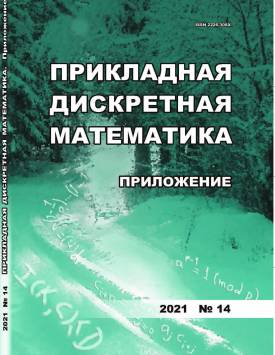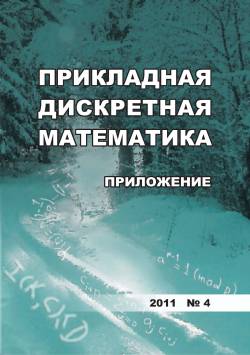To the task of description minimal by inclusion perfect ciphers
This work is dealing with the problem of description Shannon perfect ciphers (which are absolutely immune against the attack on ciphertext, according to Shannon), minimal by inclusion. A graph approach to the description of perfect ciphers and their modern analogues and generalizations is proposed. The equivalence graph of the keys of the cipher is defined. Key equivalence refers to the following: two different keys are equivalent in cipher-value xi, if the cipher-value xi on these keys is encrypted to the same code designation. In this case, pairwise different keys k1, k2, k3, . . . , kn-1, kn form a cycle of length n, if there is such a sequence of cipher-values that: 1) the neighboring cipher-values are different; 2) the keys k1, k2, k3, . . . , kn-1, kn, k1 are sequentially equivalent in the corresponding cipher-values. If n is an odd number, then the keys k1, k2, . . . , kn form an odd-length cycle. A sufficient minimum inclusion condition of the cipher has been proven: let some inhomogeneously connected component of the equivalence graph of the keys of the cipher have an odd-length cycle, then the cipher is minimal by inclusion. Examples are given to illustrate the effectiveness of the proposed approach. The results can be used to study almost-perfect ciphers.
Keywords
non-endomorphic ciphers, endomorphic ciphers, perfect ciphersAuthors
| Name | Organization | |
| Medvedeva N. V. | Ural State Transport University | medvedeva_n_v@mail.ru |
| Titov S. S. | Ural State Transport University | stitov@usaaa.ru |
References

To the task of description minimal by inclusion perfect ciphers | Applied Discrete Mathematics. Supplement. 2021. № 14. DOI: 10.17223/2226308X/14/20
